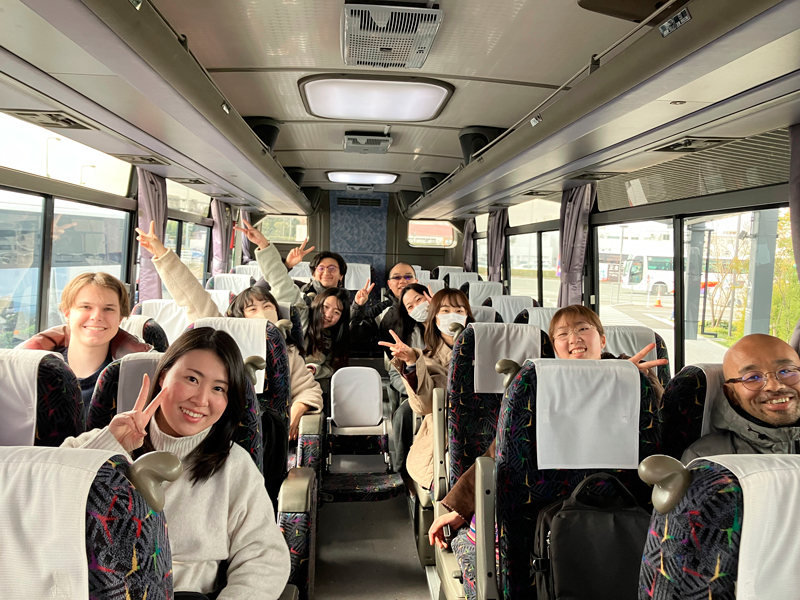GLFP 10期生 Field Tripを実施しました(熊本)/ GLFP 10th Cohort visited Kumamoto.
2024.04.11
2024年2月10日~12日の2泊3日でGLFP Field Tripを実施し、10期生9名および教職員で熊本県の益城町、熊本市、南阿蘇村を訪れました。今回のField Tripは「震災学習」と「多文化共生を考えること」を主な目的とし実施しました。
1日目は羽田空港から空路熊本に向かい予定通り到着した後、益城町にて東無田集落スタディーツアーに参加しました。まず動画や写真を見ながらガイドの方から震災時の状況などの説明を受けた後、実際にガイドの方と一緒に集落を歩きながら地震によってできた断層を見学し、2度の震度7に見舞われた集落が受けた被害の概要の説明を受けました。今年の元旦に起きた能登半島地震からさほど日が経っていないこともあるからか、10期生も神妙な面持ちで説明に聞き入っていました。このスタディーツアーを通し、大震災のような大きな災害が発生した際の地域コミュニティの重要性や、お互いに助け合うことの大切さを改めて感じる機会となりました。
夕方は熊本市内へ移動し、水前寺公園内の日本庭園を散策したり熊本地震で倒壊し復元されたジェーンズ邸を見学し、熊本県の歴史についても知見を深めました。
For three days and two nights from February 10th through the 12th, 2024, on GLFP field trip, 9 of the GLFP 10th Cohort, faculty and staff visited Mashikimachi, Kumamoto City, and Minamiaso Village in Kumamoto Prefecture. The main purpose of this field trip was to provide the students with valuable opportunities to experience "earthquake disaster learning" and to "think about Multiculturalism", respectively, in each destination.
On the first day, we arrived in Kumamoto from Haneda Airport as scheduled, and went on the Higashimuta Village Study Tour to Mashikimachi. After being lectured about the situation at the time of the earthquake by the guide using videos and photos, we then walked through the affected village with the guide to observe the fault trace of the surface rupture produced by the 2016 Kumamoto earthquake sequence, receiving an overview briefing about the damages suffered by the village, which was struck twice by a magnitude 7 earthquake. The 10th Cohort listened attentively to the explanation with solemn expressions all the while intensifying their awareness of the crisis encapsulated by the phrase "Today you, tomorrow me", perhaps because the Noto Peninsula earthquake of 2024 had just occurred on New Year's Day this year. This study tour reminded us of the importance of local communities and the significance of mutual assistance in the event of major disasters such as great earthquakes.
In the evening, we spent time in Kumamoto City, strolling through Suizenji Seishuen (Suizenji Park), a vast Japanese-style landscape garden, and also visited the restored Former Residence of L.L. Janes(home of Kumamoto's First Western School Teacher), which was devastated by the 2016 Kumamoto earthquake. These experiences enriched our understanding of Kumamoto Prefecture's history.
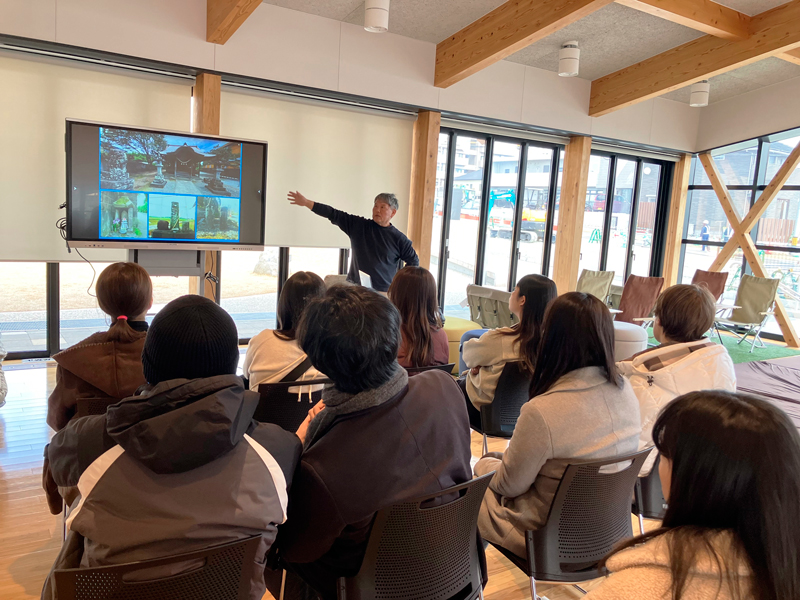
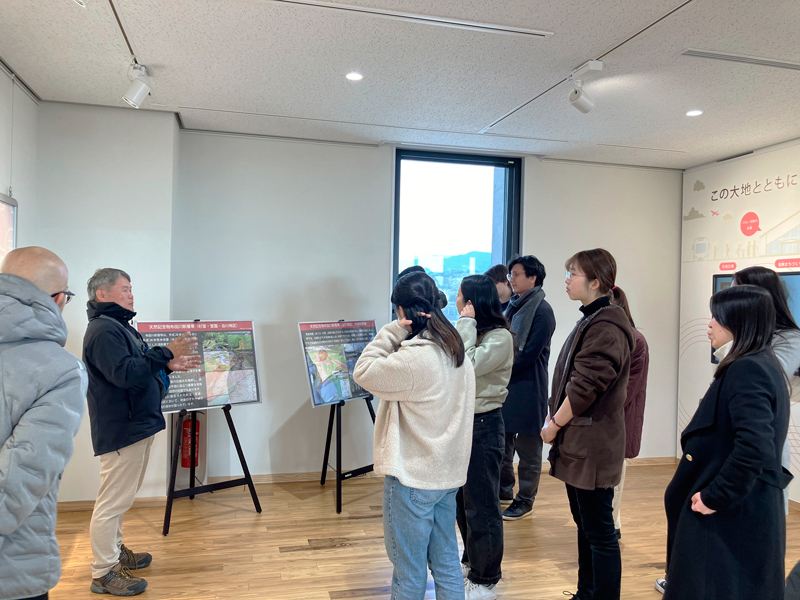
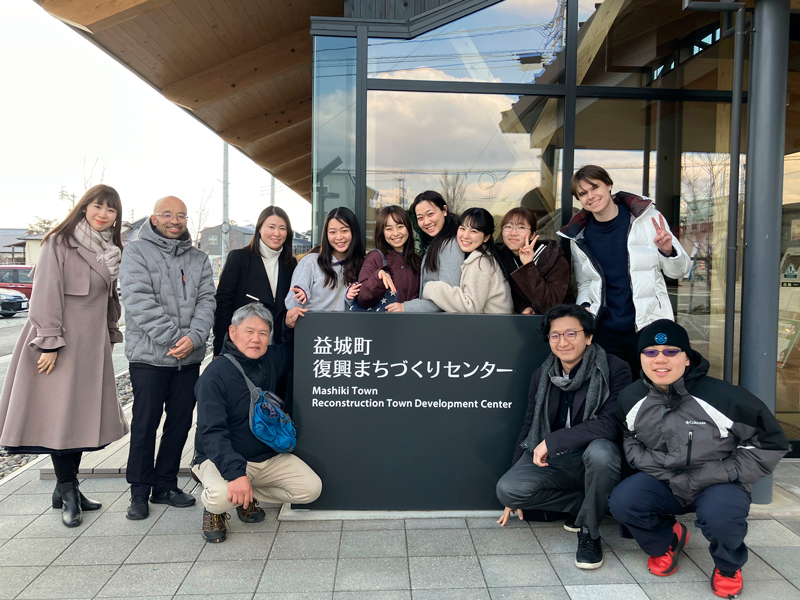
2日目の午前は、いくつかのグループに分かれ地元ガイドによる案内のもと、熊本城を見学しました。2016年4月に発生した熊本地震の被害の爪痕が残る中、今後30年にわたり続く復旧工事の説明や熊本城の歴史について英語で説明を受けました。午後は熊本市国際交流会館にて熊本地震時から熊本に在住している3名の外国人住民(熊本大学の教員および熊本イスラミックセンターのメンバー)を講師に迎え、言語や文化の違いによって地震発生時に直面した様々な問題などの講義を受けました。講師や国際交流会館の方々からもお褒めの言葉をいただくほど活発に質問や意見が飛び交う非常に活気のある時間となりました。NHK国際放送局の取材も入り、当日の様子は同局の番組 "Chatroom Japan#22 Things I Learned from the Kumamoto Quakes" として取り上げられました(番組はこちらでご覧いただけます)。2日目の活動には熊本大学に留学中の学生や地元の高校生も参加し、普段東京で暮らしているだけでは出会えない同世代との交流を楽しんでいる様子でした。
On the morning of the second day, the students were divided into several groups and visited Kumamoto Castle under the guidance of local guides. Amidst the still-unhealed scars from the damage to Kumamoto Castle caused by the Kumamoto earthquakes in April 2016, we were briefed in English on the ongoing restoration work, expected to take at least another 30 years, as well as the history of the iconic Kumamoto Castle. In the afternoon, at the Kumamoto City International Center, three foreign residents (Kumamoto University faculty members and Kumamoto Islamic Center member), who have been living in Kumamoto since the earthquakes gave a lecturer on the various problems and difficulties, they faced due to linguistic and cultural differences at the time of the earthquake. The session was marked by an active exchange of opinions and questions from the students, who engaged in fruitful discussions on the topic, resulting in praise from the lecturers and center staff members. NHK WORLD-JAPAN featured the session on its platform "Chatroom Japan" under the title "#22:Lessons Learned from the Kumamoto Earthquake" (the program can be viewed here). Thanks to the participation of students studying abroad at Kumamoto University and local high school students in the second day's activities, the GLFP 10th Cohort seemed to enjoy interacting with peers of their generation that they would not normally encounter in their daily lives in Tokyo.
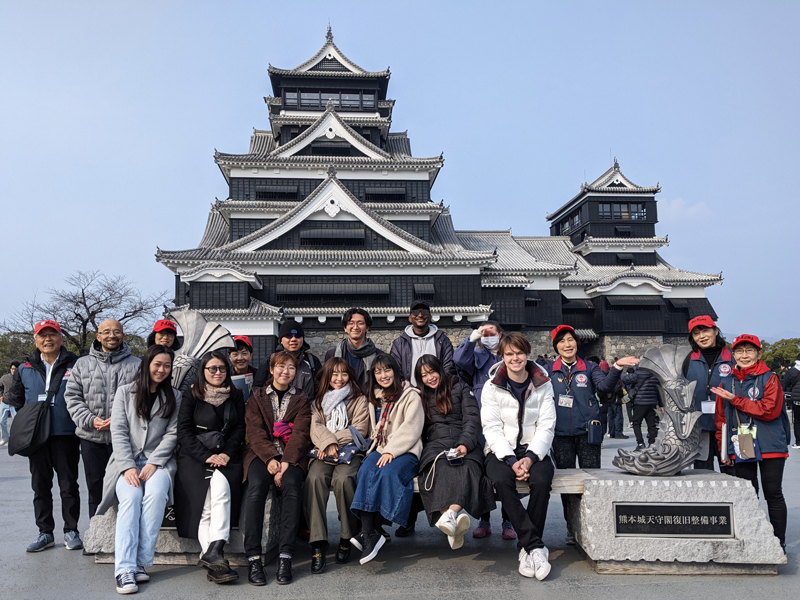
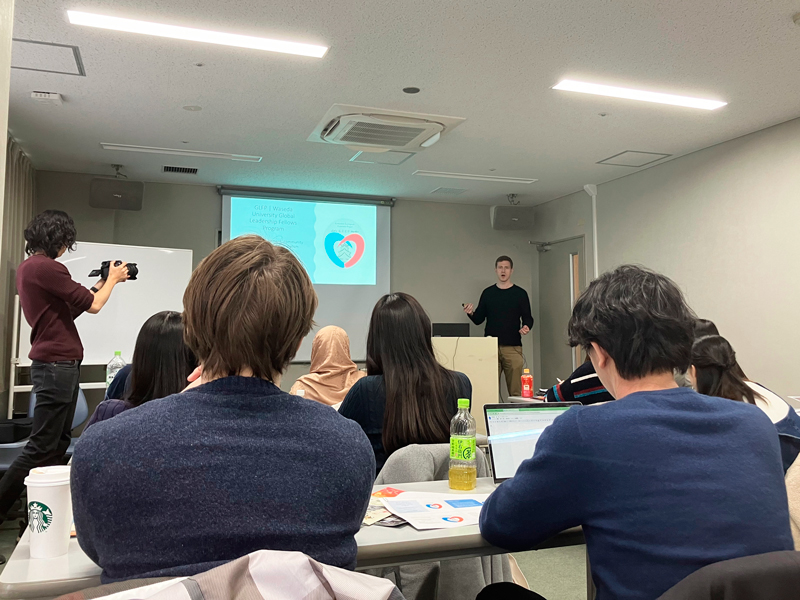
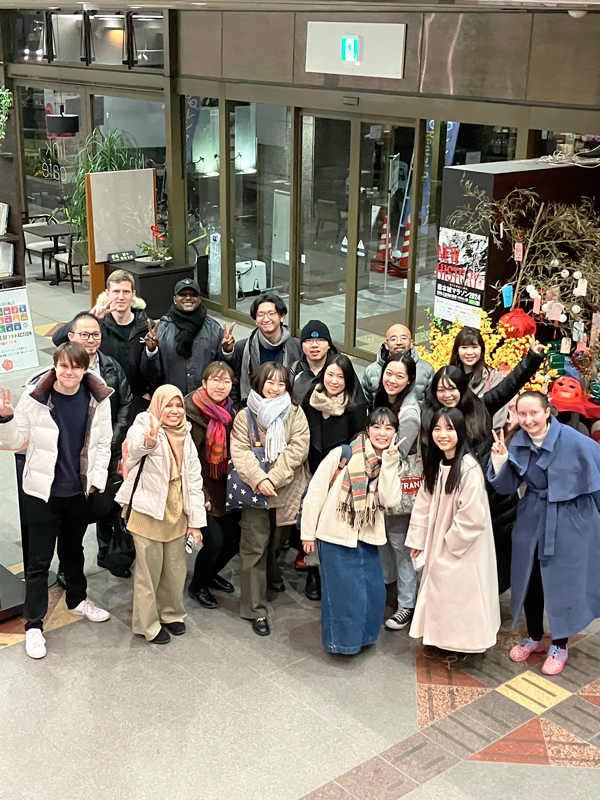
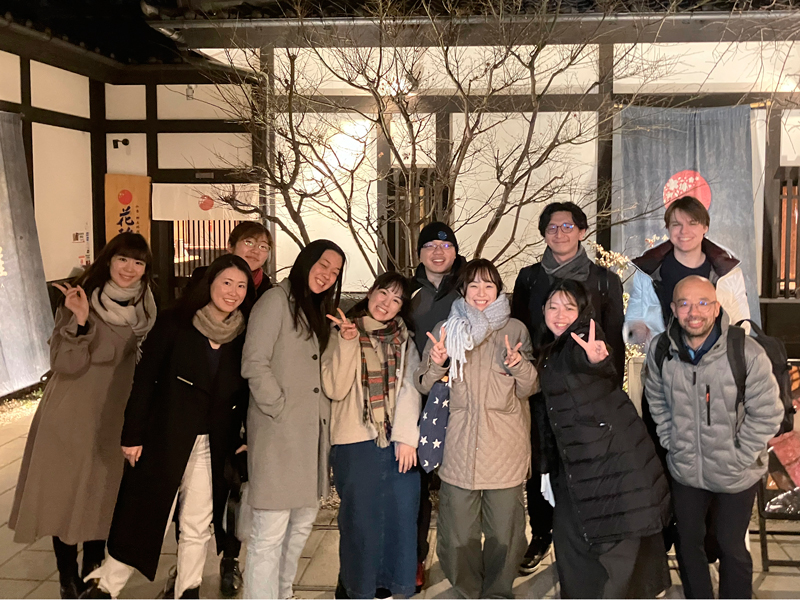
最終日となる3日目は午前中に南阿蘇村にある熊本地震 震災ミュージアムを訪れ、午後には帰京の途につきました。
On the third and final day, we visited the Kumamoto Earthquake Memorial Museum KIOKU in Minamiaso Village in the morning and in the afternoon, headed back to Tokyo.
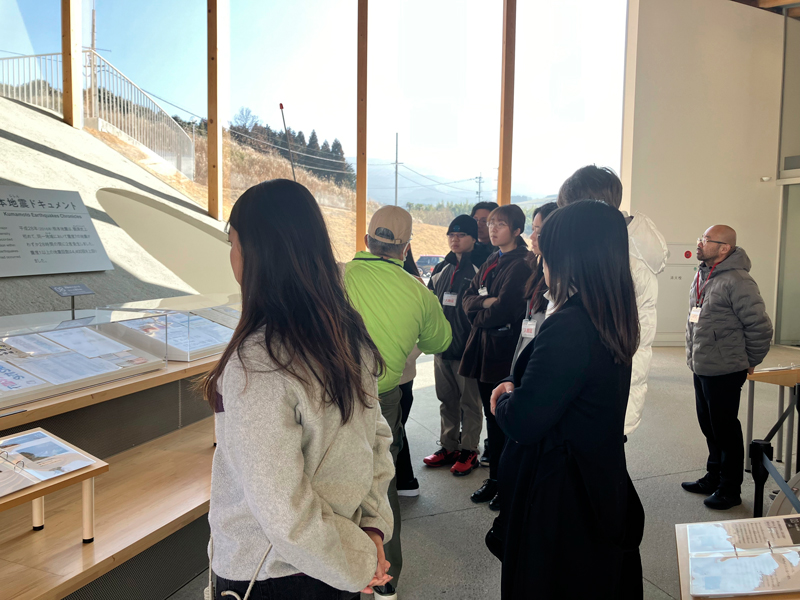
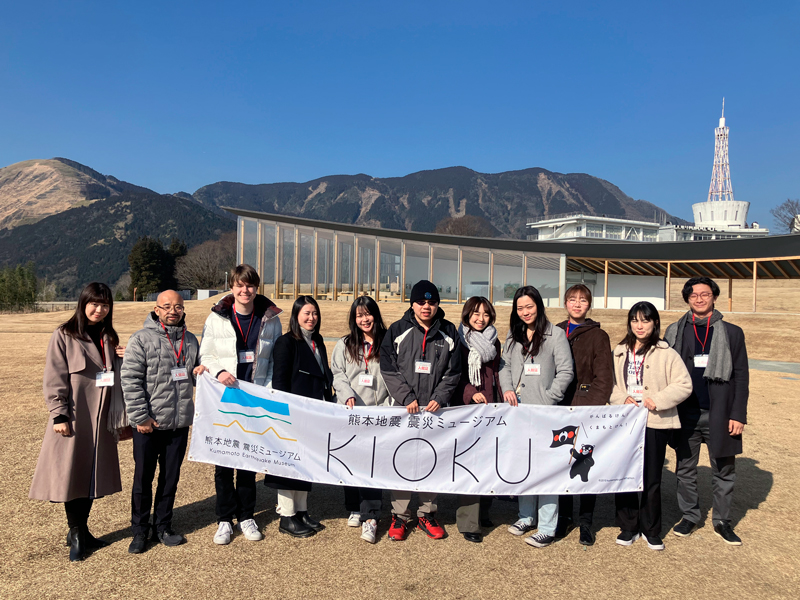
3日間を通じ、自然災害の多い日本では災害をなくすことはできなくても備えることはできること、また備えることの大切さ、自然との共生についてなど改めて考え、大きな災害という非日常に直面した場合、自分ならどう行動するか、周りの人のために何ができるかを考える良い機会となりました。
3日間天候にも恵まれ、現地の人たちに温かく迎えていただき、10期生における親交をより一層深めることができました。
Over the span of three days, we have learned that as long as we live in disaster-prone Japan, natural disasters are inevitable, however, disaster prevention and mitigation are achievable through preparedness. The field trip led us to reconsider the importance of disaster readiness and resilience, as well as our coexistence with nature. It also provided a significant opportunity to contemplate how we would act and what we could do for those around us during the unprecedented circumstances of a major disaster.
Blessed with fine weather throughout the entire period and the warm hospitality of the local people, the GLFP 10th Cohort further deepened their bonds of friendship.
